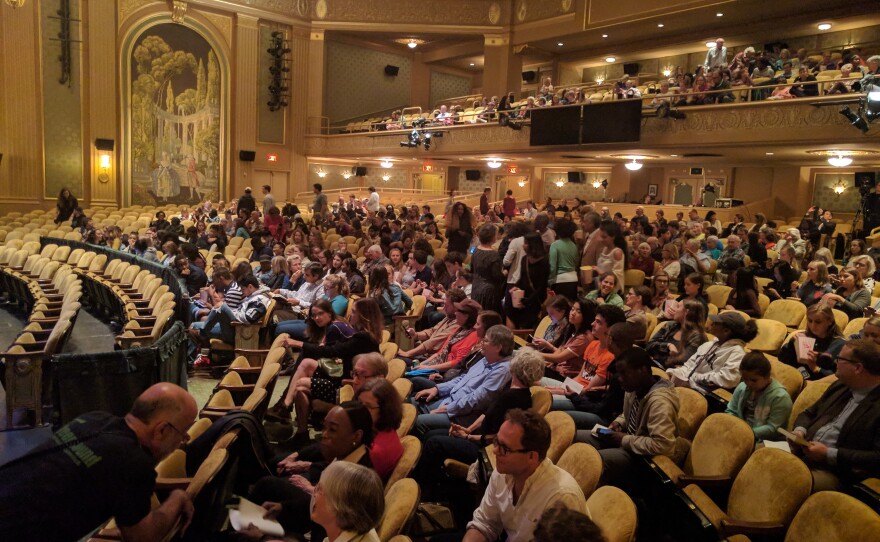Margot Lee Shetterly is the author of the New York Times bestseller Hidden Figures, about the true story of a group of black female mathematicians working at NASA and helping America dominate aeronautics, space research, and computer technology – although no textbook acknowledges their work. She discussed her novel yesterday at the Paramount Theater, in a lecture part of UVa’s Engagement Lecture Series. WMRA’s Marguerite Gallorini reports.
Writing this book was a matter of broadening the American story to include all of its actors, according to Margot Lee Shetterly, author of the book Hidden Figures.
MARGOT LEE SHETTERLY: We have had, for a long time, a very narrow idea of American History, and I think this expands that. So, I really hope that what this does is encourage people to look beyond the current boundaries for American History.
She presented her book at the Paramount Theater, followed by a book signing and a screening of the movie based on her book, nominated 3 times at the Academy Awards. During her lecture, she mentioned the absence of Black voices in Charlottesville’s own History.
SHETTERLY: I believe one of the reasons why the push to remove these statues is so strong right now, is because the statues symbolize an absence: the absence of tales of not just Black lives, but American lives, like the residents of the Black Vinegar Hill neighborhood here in Charlottesville, where the statues were built. That absence has created a powerful vacuum and that vacuum is trying urgently to absorb the stories of people like Dorothy Vaughan, Mary Jackson, Katherine Johnson, and Christine Darden.
These are the Black women of her book, who worked at the NASA research center in Hampton, VA, helping with the Space Race. Shetterly now lives in Charlottesville, but she is a native of Hampton – and even there, people had never heard of these ladies’ scientific contribution.
SHETTERLY: All the time on the streets of Hampton, VA, I ran into people who lived down the street from Dorothy Vaughan, or they went to church with Katherine Johnson; and though those people knew the women, they, too, were asking me: Why didn't I know this story? One of the obvious reasons is that the Black women were literally hidden away in a separate office from the White women. The women, regardless of their race, were given a lower classification, they were paid less than the male engineers - and that's even if they were doing the same work - that meant that the women's contributions were barely acknowledged, much less celebrated.
Before learning about all this, she says she had been living too close to it to fully appreciate the historical significance of the work of these women mathematicians.
SHETTERLY: Growing up there, I had the very good fortune to see Black – or female – mathematicians, scientists, and engineers as totally normal people. They were as normal as the White male mathematicians and scientists and engineers.
That’s a point that Professor Lisa Woolfork, from UVa’s department of English underlined during the Q/A session.
LISA WOOLFORK: What you've done in the story so powerfully, is to, as you said – that for you growing up, normal was: Black, female, scientist, and have them not be three different people. That one person, you Sunday school teacher for example, or your mother's sorority sisters: these were women that did this all the time, and this was normal for you. And I just find that that is such an important new default setting, and it allows us to think about the larger picture of America as something that is not limited to very small segments of the population. And now, here we are, at this wonderful place, this wonderful time in our History, where we get a chance to look back at that History squarely, and figure out where we've been, and what we want to do differently.
Shetterly agrees.
SHETTERLY: What happened here in Charlottesville a month ago has a lot to do with what’s happening in the country now, but it also has to do with the History. I think we cannot run away from the History, that we really have to face it; and if we do that, it gives us a much greater chance of achieving those goals that are written into our Constitution, our founding documents. I think that, as painful as it is, perhaps it's an opportunity to address some of those dormant conversations.




